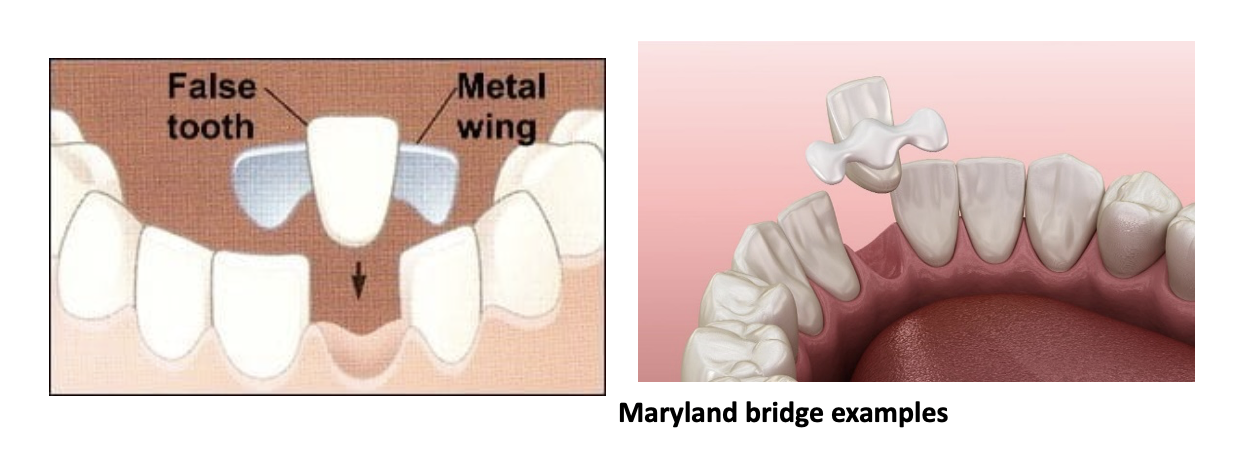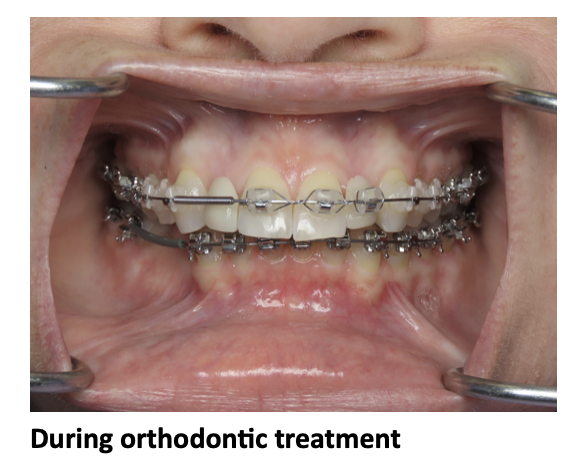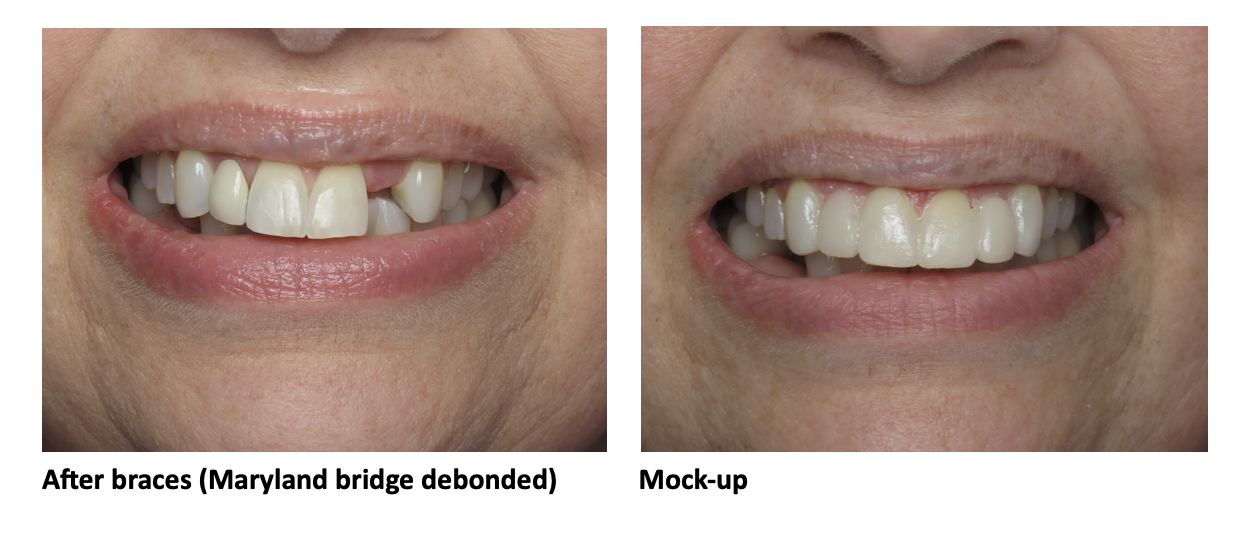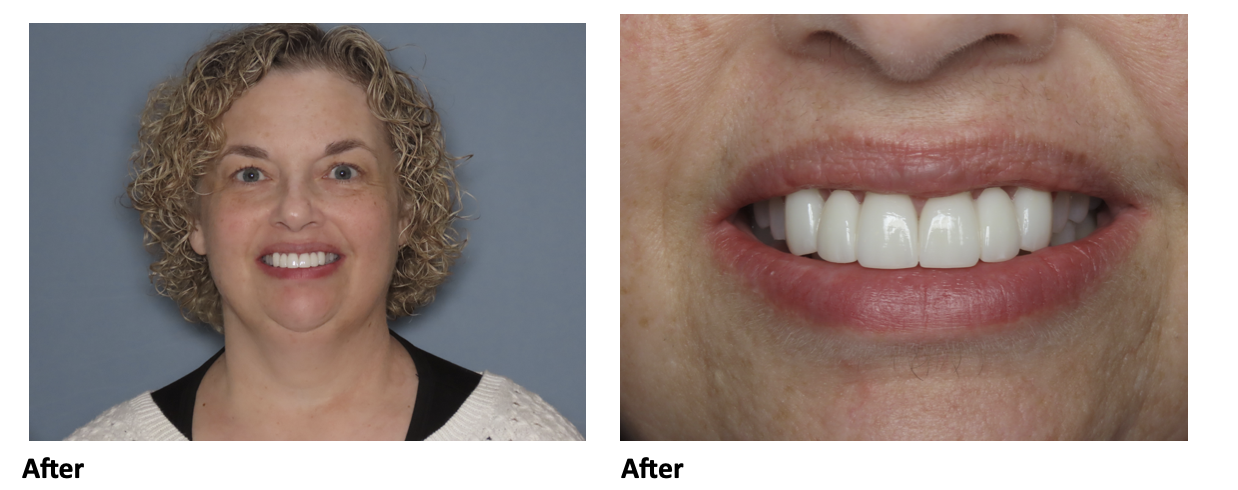By Dr. Elizabeth Eggert
How did this start?
Kate works in the medical field and came to us as a new patient in 2019. At her new patient exam, Dr. Elizabeth noted that Kate was congenitally missing her upper lateral incisors. The lateral incisor is the small tooth next to the central, front tooth. Missing lateral incisors are most commonly caused by a condition called hypodontia, in which someone is born with missing teeth. This situation is more common than you realize. Kate had her lateral incisors replaced by “Maryland” bridges over 30 years ago and she had some issues with them staying bonded in the past. Maryland bridges aren’t used much anymore, but can be a decent way to replace teeth (temporarily) for patients that are young because over time tooth and gum changes are expected.
Kate had a bridge on her lower right side as well that came out due to the fracture of one of the abutment (anchor) teeth. After this occurred, Kate decided it was time to work on her bite since she wanted implants to replace her lower teeth and once implants are placed, it is more difficult to idealize a bite since the implants can’t be moved with orthodontics like teeth can.

What did Kate want?
Kate wanted to complete her treatment as soon as possible, but she understood that changing her bite would include orthodontic treatment. Kate worked with Dr. Brian DeVoe and had traditional brackets and wires placed. Luckily, Dr. Elizabeth was able to section Kate’s original Maryland bridges so the teeth could still be moved, but Kate would not have to go without teeth in the front during her orthodontic treatment. Kate was hoping to replace her missing teeth with implants so she would not have to use her adjacent teeth as anchors, however, due to the fact that Kate had been missing her lateral incisors her whole life, there wasn’t enough bone for implants without serious bone grafting interventions. Even with surgical interventions, Kate still only would have had a guarded prognosis for implants. Therefore, Kate decided to complete her case with conventional bridges.

What was involved?
Kate spent approximately 18 months in braces. After she completed orthodontics, Kate came to our office for the pre-planning phase for her new conventional bridges. We took impressions for a wax-up so Kate could preview her new restorations. With the wax-up, we were able to complete a mock-up in Kate’s face so she could really see how the new bridges would look. Kate also spent some time bleaching of her natural teeth so she could use a white porcelain for her new bridges. This helped to brighten her smile. One interesting thing occurred while Kate was bleaching. She had purchased bleach online from the Amazon store, but ended up with a severe ulceration of her tissues from that bleach. After reviewing techniques for healing, her tissue did heal and we were able to continue on with her treatment plan.
After Kate approved the mock-up and her gingival tissue healed, she returned to our office for the preparation of her teeth for conventional bridges. We placed temporary bridges for a couple of weeks and then the final bridges were cemented. She finished her treatment by having new orthodontic retainers fabricated.

What does Kate think?
When we asked Kate what she thought about the treatment once completed, she said that she didn’t understand everything that would go into correcting her bite and planning for new restorations. She initially thought it would be a shorter process. She was surprised at all the detail that went into the planning and the treatment. “I am just amazed at the precision and every single thing that was considered. Dr. Elizabeth Eggert’s skill and ability to do what she does truly amazes me.” When asked what she would tell someone thinking of getting this done, she said, “I would tell them to trust the process and to trust Dr. Elizabeth. It may not be the easiest to live through or it may seem long and tedious, but the end results are so worth it!” Thank you for putting your trust in us to complete your care, Kate! We love your new bright smile!

